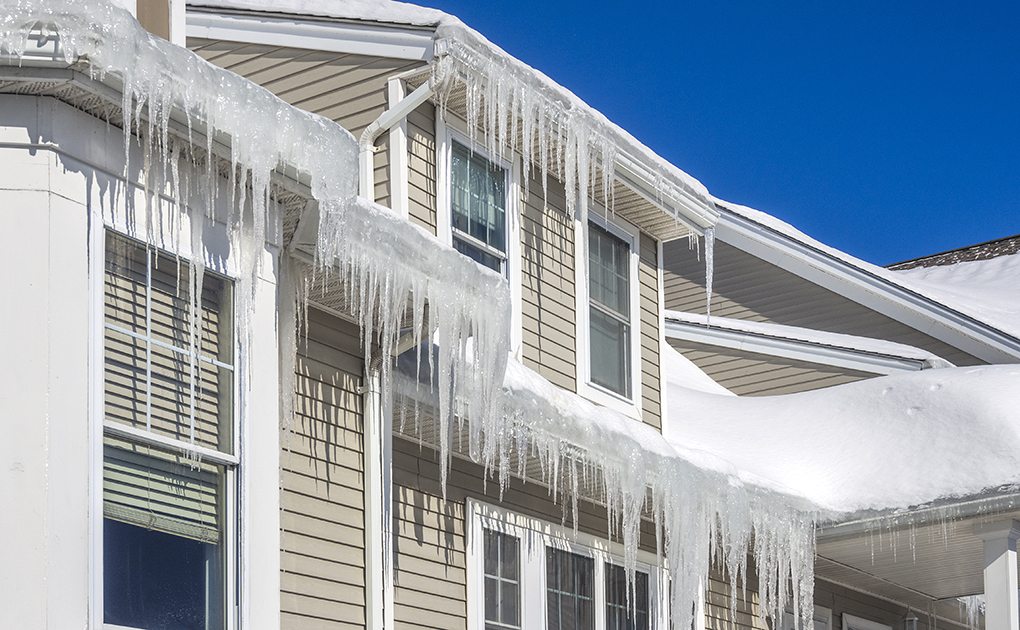14 Ways to Prep Your Multifamily Asset so it’s Ready for Spring Leasing Season

With winter right around the corner, it’s essential for multifamily owners and property managers to start winterizing. By doing so, you can avoid costly repairs, and more importantly, dangerous situations for residents. In addition, it will be easier to get your property looking great for the peak leasing season. The following tips can be used as guidelines to help ensure that even when the weather gets frightful, your multifamily property will remain delightful.
1. Check your plumbing — As the temperature drops, the chance of cracks and leaks in your plumbing increases. Take precautions by insulating pipes, checking indoor and outdoor plumbing and turning off the water from hose cuffs.
2. Don’t leave the leaves — Neglecting to clean out autumn leaves and various forms of detritus in your gutters can lead to major issues as the winter approaches. Trapped water leads to more ice and snow accumulation, which translates into more leaks and high-cost repairs.
3. Keep an eye on your HVAC — Since your residents will rely on this to keep them warm and toasty as the cold sets in, it’s imperative that the system remains well maintained. Changing air filters or a full-on tune will help increase the efficiency, reliability and longevity of your HVAC system.
4. Trim trees — Removing weak branches will lessen the likelihood of tree-related property damage or injury as the winter winds pick up. Taking a few minutes to assess the trees around your community could save you the time and the costly expense of dealing with fallen tree limbs as the season progresses.
5. Shield from the elements — Insulation can be the first line of defense in keeping the arctic weather out of your buildings. Seal off walls, windows, floors, ceilings, and doors to increase energy efficiency and the comfort of residents.
6. Create a plan of action — Unfortunately, there’s no way to stop the snowfall and ice. However, you can proactively combat it with the use of ice melting products like rock salt and contracts for snow removal machinery and/or personnel. Exploring these options in advance will lessen the stress of dealing with the effects of winter storms.
7. Inform residents — Leaving a portable heater on while you are sleeping is a waste of electricity and presents a very serious fire risks. Be sure to have a discussion with residents about the danger of such practices.
8. Regulate your thermostat — Establish a temperature that works for both you and your residents as you head into the winter months. 68 degrees Fahrenheit is usually a good temperature for residents when they are home, but it can be lowered while they are asleep or out of the building. Monitoring and adjusting the temperature can help boost the energy efficiency of your multifamily. Of course be sure that indoor temperatures fall within local municipalities guidelines.
9. Don’t be left in the dark — Avoid lighting issues by checking outdoor lights for possible cracking before the free/thaw cycle starts.
10. Tend to your roof — Before the first snow, be sure to examine your roof for any possible damage or need for repair. Once the snow hits, carefully monitor snow accumulation on the roof and, if need be, work to ensure that no roof areas are overloaded.
11. Have fireplaces professionally cleaned — If your amenity space includes a fireplace with a chimney, make sure to have it cleaned.
12. Inspect fire alarms — Along with the winter holidays comes cooking, and sadly, an increase in kitchen-related fires. Keep your residents safe by always checking to be sure that your alarms are functioning properly.
13. Keep open lines of communication with residents — Establishing a text or email system can be an effective way of relaying vital information regarding weather or property conditions to your residents.
14. Keep the Floors Dry — In addition to keeping walkways ice and snow free, placing waterproof mats at building entrances can help your residences avoid any slips or falls.
Winter, and the bombarding conditions associated with it, can make life extremely difficult for property owners and residents alike. By taking preventative measures and addressing minor problems before they become major, you can ease some of the stress of the winter season. Adequate preparation and conveying information are the major keys to making sure that your buildings and residents are ready to take on any winter storm that blows their way.

